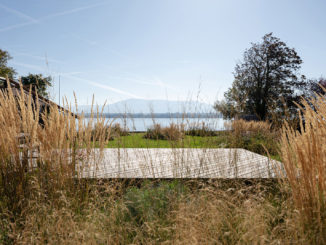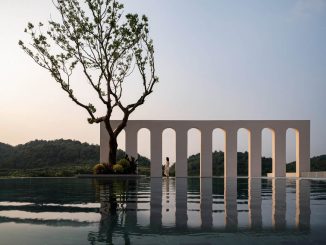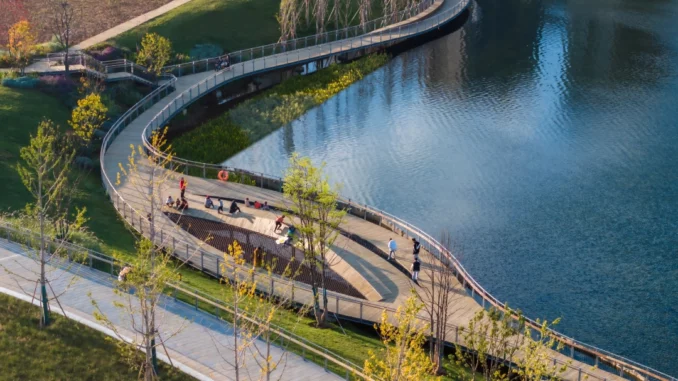
Dianchi Lake, a “plateau pearl,” is the mother lake of Kunming. For thousands of years, Dianchi Lake has nurtured Kunming. It is an important part of the ecological security system in the upper reaches of the Yangtze River and plays an extremely important role in ensuring national and regional ecological security.
Fanchun Lake and Muchun Lake are located in the center of Chenggong District of Kunming, belonging to the Luolong River system of the Yangtze River basin. Starting from Bailongtan Reservoir and flowing into Dianchi Lake, they are placed in the third level protection zone of Dianchi Lake. The measures to intercept and control pollution in the upstream water system of Dianchi Lake, including the water environment improvement of Fanchun Lake and Muchun Lake, are an important part of the protection and treatment efforts of Dianchi Lake.
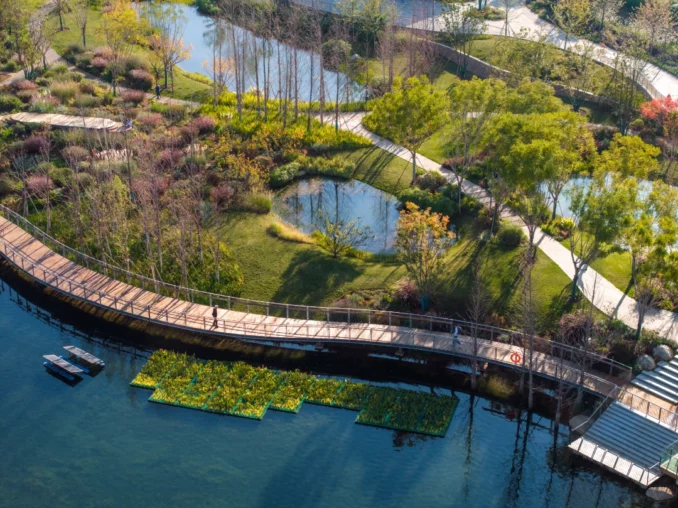
The water area stretches 11.12 hectares, totalling 44% of the park’s area. Before the project’s launch, the lake body was heavily polluted. The average water quality of Muchun Lake was Class V. The COD in Fanchun Lake seriously exceeded the standard, and its water quality fell to a poor Class V. The water body was turbid, basically devoid of the water ecosystem’s self-purification ability. Weeds were overgrown around the water body, and the ecological environment was unbalanced.
Core Ideas
The core idea of the design is to move from pure park landscape design to systematic planning of ecological space. The design team evaluates the site conditions from the perspectives of ecological environment quality and ecological species composition, aiming to elevate water quality, restore ecological balance, improve the living environment, and comprehensively improve ecological environment quality.
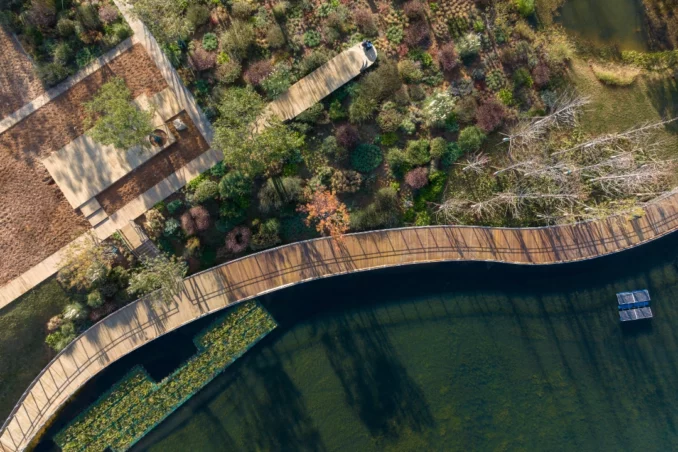
The project starts with water environment treatment and forms a self-circulating water ecological micro-environment through the construction of an underwater forest system, efficient biological filters, and an artificial wetland. At the same time, it rebuilds diverse vegetation communities and restores habitats of flora and fauna with Kunming native vegetation. It creates participatory landscape space nodes, and improves the living environment, making the site an ideal place for citizens to walk into nature and get close to the water.
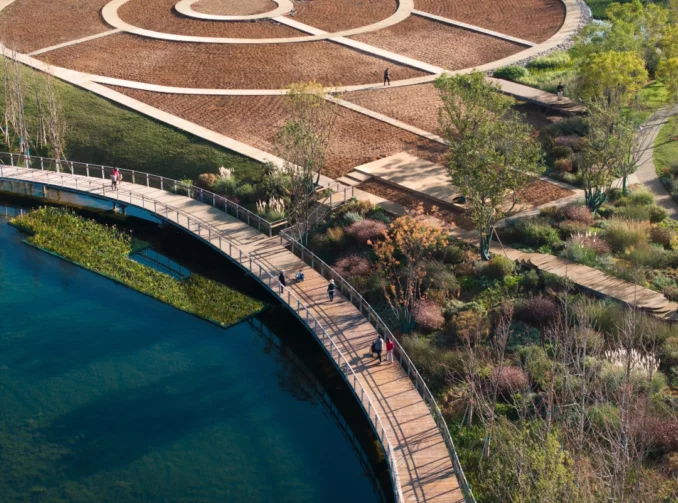
Design Methods
1. Water environment treatment, from heavily polluted reservoir to crystal clear underwater forest
Measure 1: Control external pollution
In view of the pollution caused by upstream water, urban road and farmland surface runoff, a bypass treatment system composed of high efficiency biological filter and constructed wetland is adopted to deal with it. Plant roots, floating wetlands and artificial aquatic grasses are used as hanging substrates to purify the micro-polluted rainwater with the biological contact oxidation technology, so as to control the influence of external pollution on water quality.
Measure 2: Establish a low-maintenance and sustainable surface runoff purification cycle system
The surface runoff, after preliminary purification of surface soil and vegetation, further removes the excessive pollutants in the water body through the efficient biological filter and constructed wetland system. After the treatment is completed, it is collected by ecological ditches and discharged into the water bodies of Fanchun Lake and Muchun Lake, and gets further purified by the overflowable ecological barrier to form a low-maintenance water circulation self-purification system.
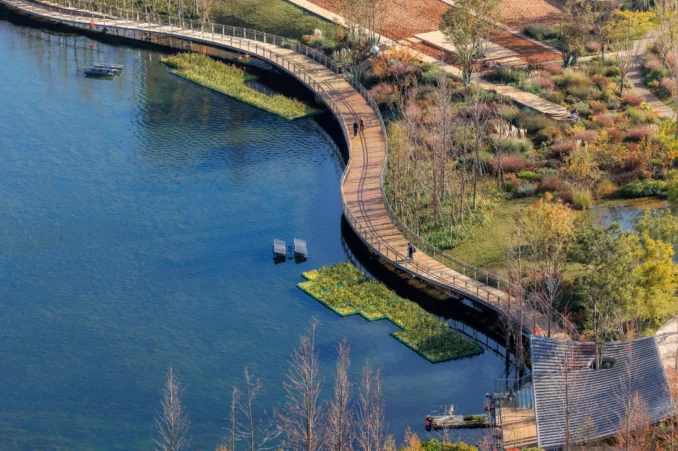
Measure 3: Build underwater forest system, control current internal pollution, and improve self-purification ability of water body
Muchun Lake, with severe silt accumulation, will go through ecological dredging, disinfection and improvement according to the sediment measurement in the early stage of the project, and the sediment will be reduced to a thickness suitable for the growth of aquatic plants. Submerged plants, aquatic animals and microorganisms will also be used to form a food chain model of production, consumption and decomposition in the water body, which builds a complete underwater forest ecosystem comprising aquatic plants, benthic animals, zooplankton, carnivorous fish, and microorganisms, to improve the self-purification capacity of the water body and boost long-term water quality conservation.
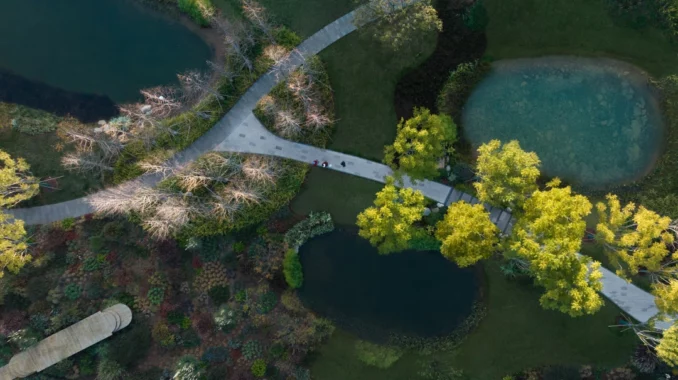
2. Flora and fauna habitat restoration, ecological garden in the city
Based on the study of the composition, quantity, distribution pattern, habitat, ecological habits and seasonal dynamics of the flora and fauna communities, it is decided to mainly take native plants as the vegetation of the project to rebuild a plant community with stable structure, laying a solid foundation for the restoration of animal habitats.
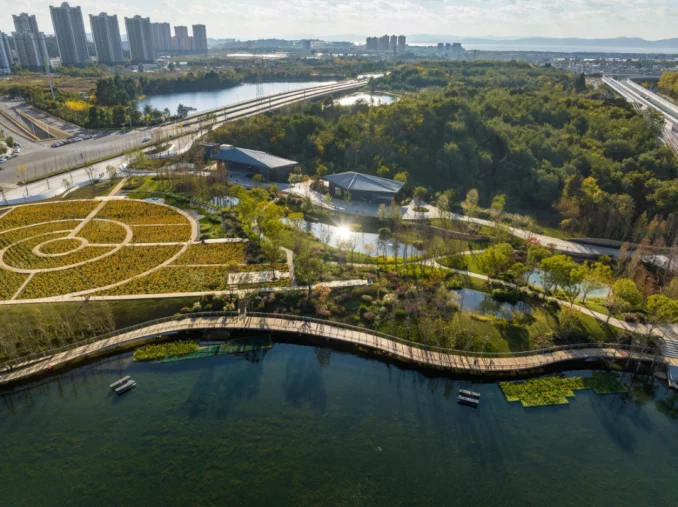
The wetland and waterfront areas focus on the construction of an aquatic plant purification structure, and the formation of a land and water ecological crisscross belt featuring wet plants, water plants, floating foliage plants and submerged plants, to create a natural revetment, wetland pond overgrown with aquatic plants, and colorful wild garden, in order to restore an ecosystem of great diversity, stability and sustainability, and rebuild the habitat of flora and fauna.
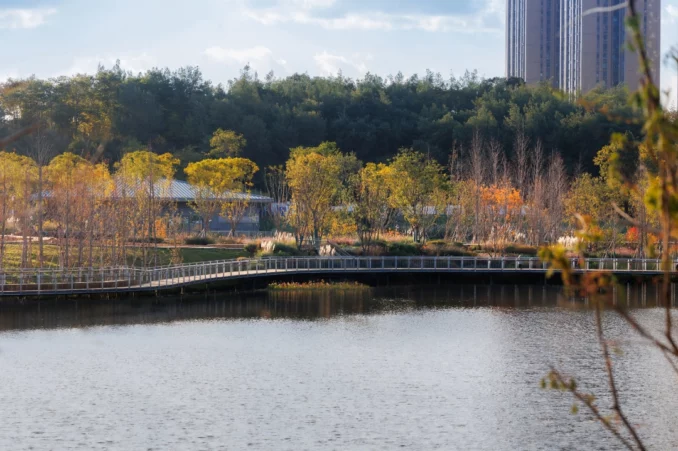
3. Building waterfront vitality, a window for citizens to get close to water and nature
The Wulong Street, which hosts the project, has a permanent population of about 50,000 people. The park is an adjoining neighbor of the densely populated Wanda Commercial Plaza and high-rise residential areas. By implanting a variety of participatory activity space, it undertakes the flow of people in the surrounding commercial facilities, business offices, residential quarters, and subway stations, connects the urban public space, and improves the ecological environment and living environment of the area. The wooden walkways floating on the lake and the winding paths in the wetland flower sea guide people to step into nature.
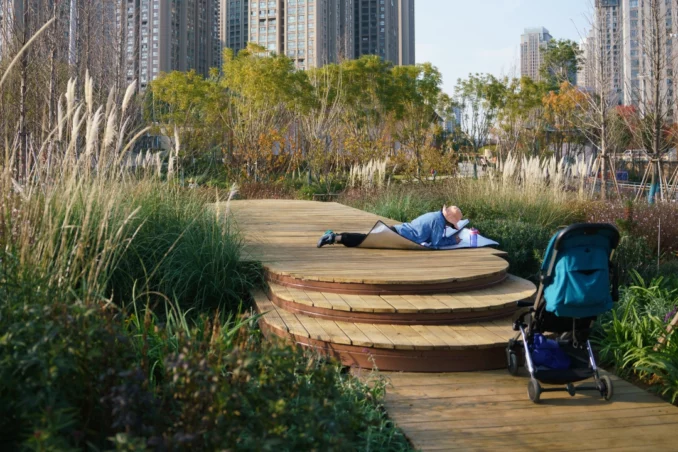
In the later stage, the project will carry out ecological water purification science popularization, sponge city, nature education and other popular science research activities along with the site operation. Relying on a variety of functional blocks, such as waterfront walkways, natural flower landscape, ecological wetland and urban countryside, it will create an immersive natural education and research scene. The park will become an ideal place for citizens to walk into nature and get close to water, injecting fresh vitality into urban life.
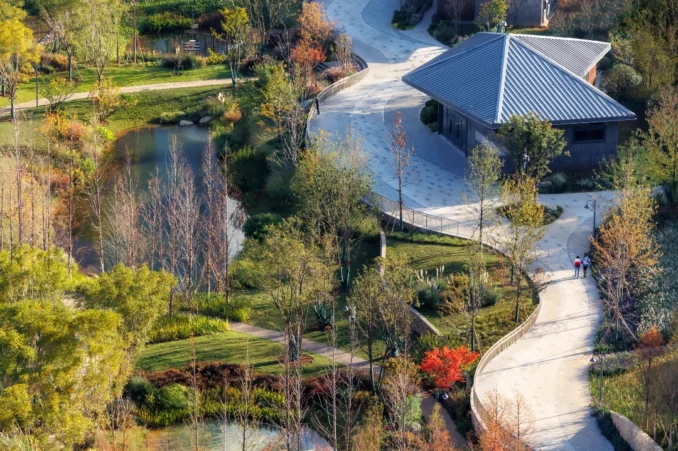
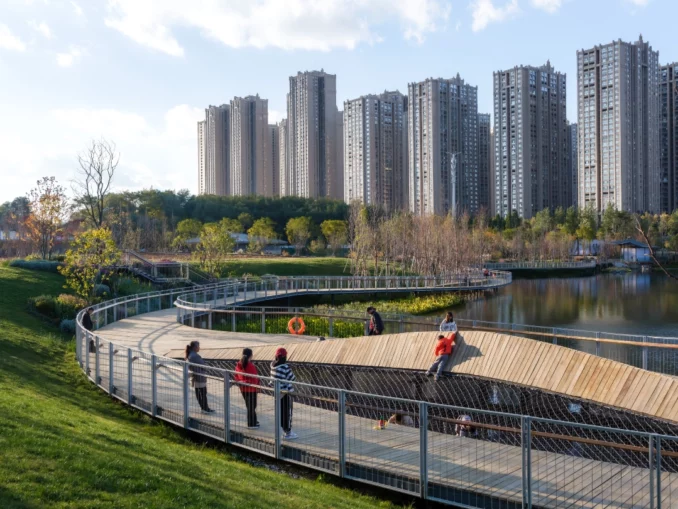
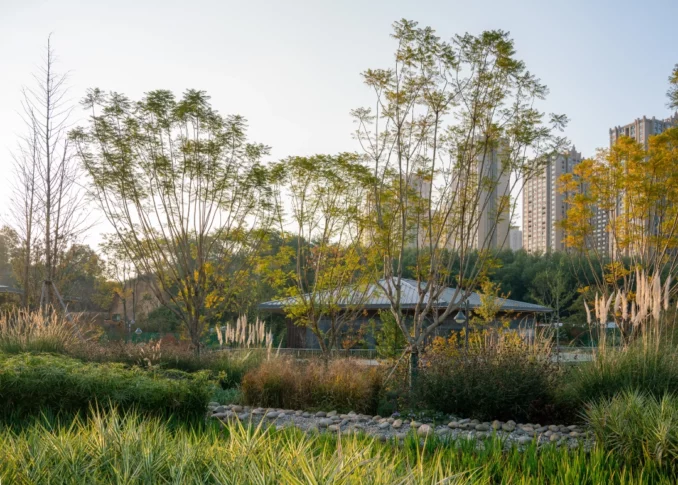
Ecological and Social Benefits
As a result of the comprehensive treatment, the water quality of Fanchun Lake and Muchun Lake has been steadily improved from the inferior Class V level before the treatment to the current surface Class IV level. The water body of this project only needs to replenish the evaporation water in the dry season, which is freed from previous upstream water transfer to maintain water quality, and thus reduces the waste of water resources. At the same time, it can play a certain role in the retention of surface runoff and upstream water in the flood season and rainy season, to reduce the flood control pressure of downstream pipes and canals.
Upon completion, the project opens up an ecological corridor of the Central Park from the Bailongtan Reservoir to the Dianchi Lake to ensure the diversity, stability and sustainability of the ecosystem, and provides a habitat and breeding place for native animals, bringing diverse habitats and species communities.
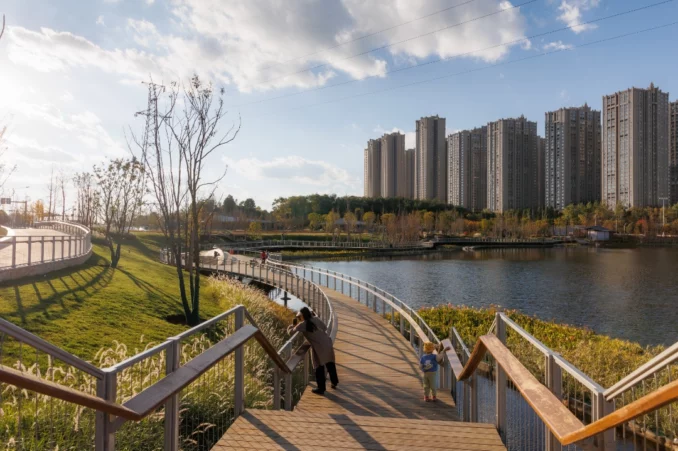
Conclusion
As an important part of the protection and management of the Dianchi Lake, the water environment improvement of the Fanchun Lake and Muchun Lake has transformed the former seriously polluted and abandoned reservoirs into ecological parks that integrate ecological landscape, sponge city, research and science popularization, and waterfront recreation. It has created a stable and sustainable self-purifying landscape ecosystem, stimulated the vitality of the urban waterfront, and provided high-quality urban open space, promoting sustainable development of the city.
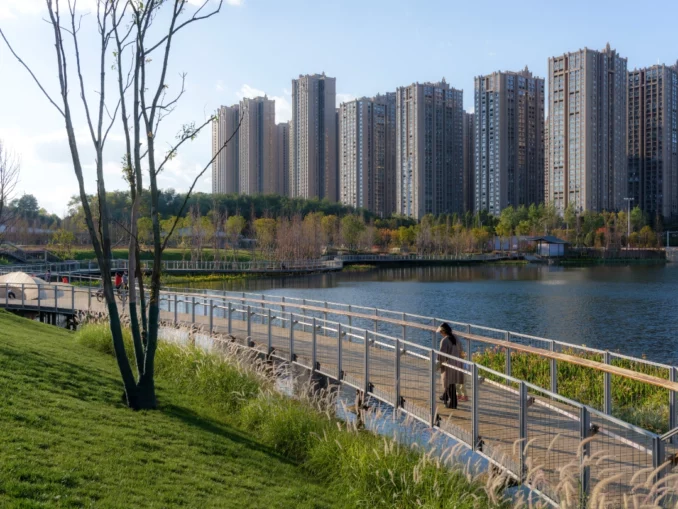
Demonstration Area of Water Environment Improvement and Ecological Construction Project of Muchun Lake and Fanchun Lake in Chenggong, Kunming
Landscape Architect: SHUISHI
Client: Bureau of Water Resources of Chenggong District, Kunming
Image Credits: SHUISHI

